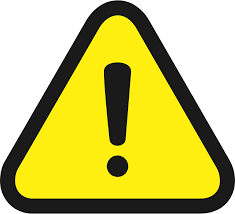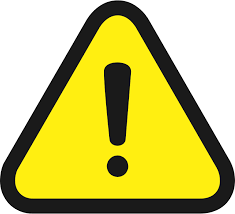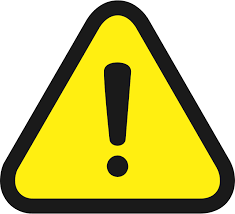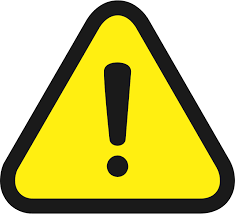Title Page
2.0 Vehicle information
-
VIN NUMBER:
-
STOCK NUMBER:
-
BODY NUMBER :
-
KILOMETRES:
-
INSPECTION LOCATION:
-
INSPECTED By:
-
FIRST INSPECTION DATE:
3.0 External Inspections
3.1 Paint Work
-
Check paint workmanship, paint free from scratches or damage. <br>Record any defects.
3.2 Glazing
-
Check all glass is free from scratches or defects.
-
Check all Sikaflex joints to ensure neat and uniformity appearance.
-
Check all EMG exit decals are located on the correct windows
3.3 Panelling
-
Check fitment of all side panels for scratches, dent and defect free .
-
Check alignment of panels against other surfaces.
-
Check opening and closing of each hatch/service compartment for correct latching and operation.
-
Check and ensure front and rear BCI badges are fitted.
3.4 Mirrors
-
Check mirror attachments.
3.5 Front service hatch
-
Check routing of all harness’ in and out of the compartment for security and contact points.
-
Check routing of all hoses in and out of the compartment for security and contact points.
-
Check general tidiness and condition of the compartment.
-
Washer bottle full / decal fitted
-
Wiper linkages secure and correctly installed
3.6 Engine compartment
-
Check routing of all harness’ in and out of the compartment for security and contact points.
-
Check routing of all hoses in and out of the compartment for security and contact points.
-
Check general tidiness and condition of the compartment.
-
Check engine oil level
-
Was engine oil added
-
how much ?
-
Check coolant level / measure concentration strength and record.
-
Record percentage
-
Was coolant added ?
-
How much ?
-
Check power steering oil level
-
Was power steering oil added ?
-
How much ?
-
Check transmission oil level
-
Was transmission oil added
-
How much was added
-
Check radiator is correctly mounted and tensioned.
-
Check fan belts for adjustment and alignment.
-
Check engine air intake pipes hoses for security and contact points.
-
Check air cleaner for security and free from debris.
-
Check installation of engine safety switches ( operation checked later )
-
Check fuel tank installation / attachment / all fuel lines are secure
3.7 Fire suppression
-
Installation completed by contactor
-
Check general tidiness and condition of the installation.
-
Check and confirm bottle gauge indicators green.
-
Check and record date of compliance tag by photo.
3.8 24V battery compartment
-
Check 24V batteries are secure in cradle.
-
Check quick release catches on cradle working correctly.
-
Check terminals are secure.
-
Check general tidiness and condition of the compartment.
-
Check routing of all harness’ within the compartments are properly sealed, secured and protected against rubbing.
-
Check battery isolation switch works.
3.9 fire extinguisher
-
Install Fire extinguishers as per document ####
-
Check fire extinguisher is fitted, and compliance plate date is correct.
-
Check and record compliance date
3.10 External decal inspection
-
Check that all external decals are fitted in accordance with decal document ########
3.11 Tyres
3.12 Check tyre pressures
-
Check all tyres for damage.
-
Check all tyre pressures.
3.13 Check wheel stud tension set to correct tension ( ###)
-
Front axle NS
-
Front axle OS
-
Drive axle NS
-
Drive axle OS
4.0 Under Vehicle inspection
-
Check routing of all harness and piping are properly sealed, secured and protected against rubbing
-
Check underfloor deadening for any unprotected or exposed areas.
-
Record front steer axle type plate data
-
Check condition of all steering linkages, joints, and threaded connections. Ensure steering components fasteners (steering gear/ angle drive) are fitted securely and are free from damage.
-
Check front axle air bags for leaks and signs of damage
-
Check front axle exhaust ports on any valves are free from paint / masking tape or under body sealer
-
Check front axle suspension levelling sensor is, free from obstructions, damage and that the cable is routed properly.
-
Record front drive axle plate data.
-
Check both axles and axle connections points are secure.
-
Check exhaust ports on any valves are free from paint / masking tape or under body sealer.
-
Check for any fuel, coolant or oil leaks.
-
Check tension of propeller shaft bolts and nuts.
-
Grease all grease points on vehicle.
-
Check rear axle oil level.
-
Was axle oil added
-
How much was added ?
5.0 Roof inspection
-
Check paint work on all surfaces and ensure its free from scratches and damage
-
Check all aerials are secured and free from damage
6.0 Internal inspection / Driver's compartment
6.1 Driver's locker
-
Check general tidiness and condition of the compartment.
6.2 Fire extinguisher compartment
-
Check general tidiness and condition of the compartment.
-
Fire Extinguisher is attached securely
-
Record extinguisher date
6.3 AC / Heater box compartment
-
Check general tidiness and condition of the compartment.
-
Check routing of all harness’ in and out of the compartment for security and pinch points.
-
Check routing of all harness’ and piping are properly sealed, secured and protected against rubbing
6.4 Dash binnacle
-
Check general tidiness and condition of the dash.
-
Check routing of all harness’ in and around dash area for security and pinch points.
-
Check button and switch configuration in accordance with specification.
6.5 Driver's RH side console
-
Check general tidiness and condition of the dash.
-
Check button and switch configuration in accordance with specification.
6.6 CCTV compartment
-
Check general tidiness and condition of the compartment.
-
Check routing of all harness’ in and out of the compartment for security and pinch points.
-
Check attachment and security of equipment within the compartment
6.7 Driver's seat
-
General condition of the seat cushions.
-
Check seat attachment to floor.
-
Check for full range of movement
-
Check all controls for functionality
-
Check seat belt for smooth easy operation
6.8 Rear of main electrical compartment
-
Check routing of all harness’ in and out of the compartment for security and pinch points.
-
Check general tidiness and condition of the compartment.
-
Check component identification decals are fitted
-
Check all circuit breaker and relays are fitted correctly and free from damage
6.9 Driver's compartment door
-
Check general condition of the door and attaching surfaces
-
Check opening and closing mechanism from both sides
6.10 Manual wheelchair ramp
-
Manual wheelchair ramp fitted, and security attached
-
Load rating decal fitted.
6.11 Flooring
-
General inspection of workmanship and compliance.
6.12 Driver's compartment decals
-
Check and ensure decals are in accordance with DOC ######
7.0 System operation test
7.1 Windscreen washers
-
Check operation and coverage of the windscreen washers.
7.2 Windscreen wipers
-
Check operation and coverage of wipers on intermittent, slow, and fast speeds
7.3 Driver's blinds
-
Check operation of drivers front electrical blind (switch 11)
-
Check driver’s manual side blind for defects and smooth operation.
7.4 Driver's partition door
-
Check operation of dimmable partition door (switch 12)
7.5 Driver's compartment light
-
Check operation of driver’s compartment light. (switch 10)
7.6 Mirror heating
-
Check operation of mirror heaters (switch 13)
-
Check for tele-tale on instrument cluster
7.7 Windscreen heating
-
Check operation of windscreen heaters (switch 14)
-
Check for tele-tale on instrument cluster
7.8 Exterior doorstep lighting.
-
Check operation of passenger compartment lighting
7.9 Passenger compartment lighting
-
Check operation of passenger compartment lighting
7.10 Horn
-
Check operation of horn
7.11 Lamp Check
-
Check operation of all external lights
-
Which lights is not working
7.12 Emergency hammers
-
Individually remove each emergency hammer at a time checking for warning
-
Check that tele-tale appears on the instrument cluster
7.13 2-way radio
-
Check installation of 2-way radio
-
Check communication possible with NCC
7.14 attack alarm
-
Check that once the duress buttons ( ####) are activated there is connection to NCC via 2-way radio
8.0 Doors
8.1 Front passenger door / operational test
-
Check opening and closing of the door
-
Check tele-tale on instrument cluster.
- Pass
- Major fault
- Minor fault
- Observation
-
Door open accelerator inactivity and brake applied.
-
TS160 plates fitted
-
Vehicles ID plate fitted
8.2 Front passenger door / safety test 1
-
Press door button to close driver’s door. Use force (Force meter) to prevent door closing, once 200N m is reached door should reopen
-
Check tele-tale on instrument cluster detects fault.
-
Does door resets after pressing button ##
8.3 Driver's compartment door
-
check and ensure door is attached securely.
-
Check and ensure workmanship is of standard
8.4 Rear passenger door / operational test
-
Check opening and closing of the door.
-
Check tele-tale on instrument cluster.
8.5 Rear passenger door / safety test 1
-
Safety critical test
-
Whilst closing door place a dowel (35mm diameter) within the safety beam.<br>Door reopens.
-
Check tele-tale on instrument cluster detects fault.
-
Door resets after pressing button ###
-
Door open, accelerator inactivity and brake applied
8.6 Wheelchair ramp
8.7 Wheelchair ramp deployment
-
Check ramp for operation.
-
Check warning light on deployment/ brake applied
-
Ramp area clean and ready for delivery
9.0 Road Test
9.0 Road test
-
Before commencing any road test activities verify the vehicle is ready. Ensure all hatches / panels / access doors are closed locked and secured. Any lock out / tag out procedures have been completed.
9.1 Door interlocks / Haltbrake
-
Open driver’s door / Ensure interlock is activated and tele-tale on dash is present
-
Open first passenger doors / Ensure interlock is activated and tele-tale on dash is present
-
Open rear passenger doors / Ensure interlock is activated and tele-tale on dash is present
9.2 Anti-roller away
-
Ensure vehicle is in a control position where these tests can be conducted safety .
Whilst seated in the driver's position , seat belt fastened and vehicle ready to drive .
- Engine running.
-Park brake off.
- Forward direction selected. -
Remove seat belt , audible message / buzzer should be heard as well as tele-tale on dash.
-
Repeat the test , this time having seat belt clipped in but not around your body. Lifting off body weight off seat should activate pressure switch in seat base and audible message / buzzer should be heard as well as tele-tale on dash.
9.3 Suspension
-
Check Kneeling function / Ensure interlock is activated and tele-tale on dash is present
-
Raise vehicle / Ensure tele-tale on dash is present
9.4 Departure
-
Dash free of any fault codes or error messages
-
Record codes / issues
-
Move vehicle forward and ensure brakes and steering react accordingly before departing facility.
9.6 AVAS (Acoustic vehicle alerting system)
9.7 Steering / handling
-
Vehicle handles and steers as expected
-
Vehicle bakes smoothly and handles as excepted under brakes
9.8 Acceleration / acceleration test
-
Vehicle is smooth under accelerations
9.9 General inspections
-
Check for any rattles, squeaks or noises that shouldn’t be present
-
Replicate stop /start operation. Open and close doors whilst ensuring CCTV images are correct (minimum 5 stops)
-
Check PICS and designation signs are working correctly
20.0 PDI Completed
-
PDI Completed and vehicle accepted for delivery Date:
-
PDI conducted by:
-
Signature:



















